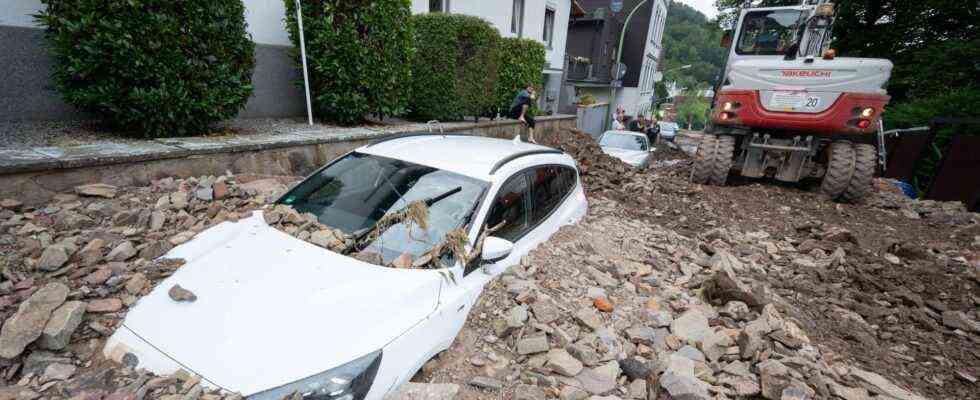Status: 07/15/2021 10:03 p.m.
One of the greatest severe weather disasters of the post-war period wreaked havoc in North Rhine-Westphalia and Rhineland-Palatinate. It has already claimed more deaths than the “flood of the century” in 2002.
Numerous people died in the federal states of North Rhine-Westphalia and Rhineland-Palatinate due to severe flooding. Massive damage was caused. Because many people are still missing, the exact number of victims is still unknown.
“We assume that we were able to rescue nine more dead by the fire brigade, at least that is the message from the technical operations management,” said the Rhineland-Palatinate Interior Minister Roger Lewentz (SPD) in the SWR.
In Rhineland-Palatinate, the Bad Neuenahr-Ahrweiler area was particularly hard hit with 19 deaths. In the 700-inhabitant village of Schuld an der Ahr alone, six houses collapsed and around 40 percent of the other residential buildings were damaged. So far, 28 deaths have been registered in the state.
In Trier, residents were rescued from a flooded part of the city with an excavator and a boat.
Image: dpa
Hundreds of houses were damaged in the Trier-Saarburg district. The damage ranged from full basements to the total loss of homes and public buildings such as a sewage treatment plant, said a spokesman for the district.
So far 30 dead in North Rhine-Westphalia
In North Rhine-Westphalia, at least 30 people died in connection with the flood, 15 of them in the Euskirchen district south of Cologne. Since the electricity and telephone network failed in many places and rescue operations were still ongoing, the situation remained confusing. Several districts in the Eifel issued disaster alarms.
The number of deaths in the two federal states was already more than twice as high during the ongoing rescue measures as in the so-called century flood in 2002, in which 21 people died in Germany.
The police asked the population in all affected districts for information on missing persons. At the same time, however, she also called for people to avoid the affected places. Disabled onlookers repeatedly obstructed the rescue operations, and the police had to keep looters away.
Bundeswehr intensifies rescue operations
The Bundeswehr has meanwhile sent more soldiers to help. In the meantime, at least 850 men and women have been deployed to support the rescue work, said a Bundeswehr spokesman. 230 soldiers and large equipment are in use in the Hagen area, including two armored recovery vehicles, trucks and wheel loaders. In Leverkusen, 200 soldiers help fill sandbags. Two armored recovery vehicles and a rescue helicopter “SAR” were on the road in Aachen.
The Bundeswehr uses tanks for rescue – like here in Aachen.
Image: dpa
Dams are being drained and drinking water is partially contaminated
At some dams, the water is drained in a controlled manner, and some neighboring villages are evacuated. Several thousand residents are affected. In several cities in the Ruhr area, residents are supposed to boil their drinking water because of the flood. Due to the flood, the bank filtrate was affected by river water, so serious changes in taste and smell are to be expected.

